The murder of George Floyd in 2020 brought Diversity, Equity, and Inclusion (DEI) to the forefront of our professional and personal lives. Nationwide protests and conversations drove organizational change and awareness of systemic discrimination. Corporations stepped up to focus on racism and its impacts on the workplace.
Now that more than two years have passed, we wanted to see how the DEI landscape has changed in corporate America. Other issues have come to the forefront of organizations during this time, including the ever-changing COVID-19 situation, a new focus on mental health, and The Great Resignation.
Our dynamic environment demands fluidity. So, how are DEI leaders keeping both the C-suite and employees engaged in DEI as we drive toward a more equitable world and workplace?
We interviewed five dynamic and insightful DEI leaders for their perspectives.
MEET THE DEI LEADERS
Sherika Ekpo
SHE/HER/HERS
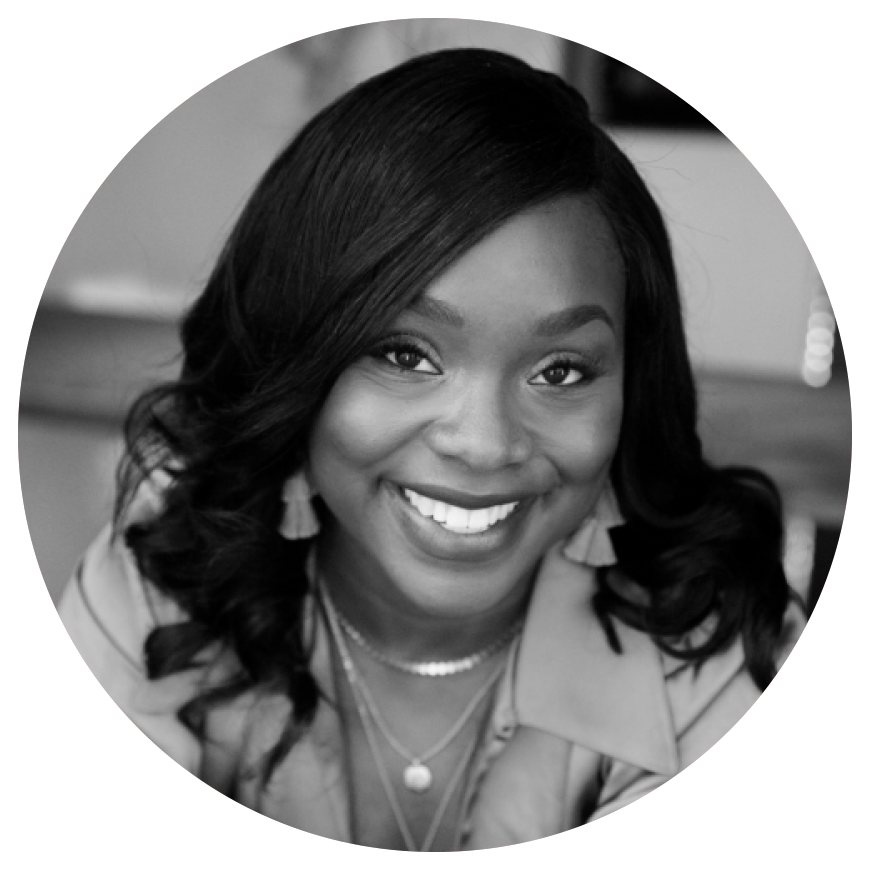
COMPANY:
Anaplan
ROLE:
Interim Chief People Officer
BACKGROUND / EXPERIENCE:
Sherika Ekpo brings nearly 20 years of strategic leadership, human capital, talent management, and professional development experience to Anaplan. Over the course of her career, she has worked at Google, JPMorgan Chase, General Electric, and the U.S. Department of Homeland Security, where she designed and executed evidence-based workplace diversity programs and product inclusion strategies that delivered bottom-line results.
COMPANY’S DEI FOCUS FOR 2022:
Advancing and measuring belonging within our culture.
INSPIRATIONAL DEI LEADER:
Rosalind Brewer, the CEO of Walgreens Boots Alliance. Roz is one of two Black women CEOs of a Fortune 500 Company and stepped in as CEO at a critical time at the height of COVID-19 vaccination distribution to prioritize equitable distribution of the COVID-19 vaccine.
Ingrid Emmons
SHE/HER/HERS
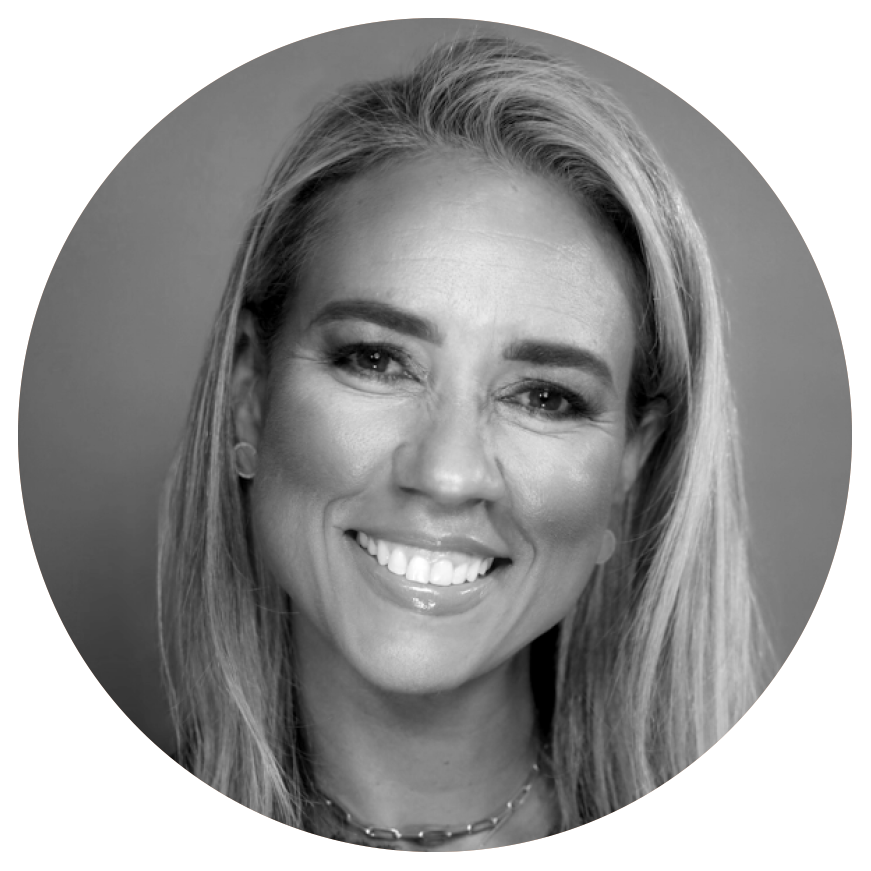
COMPANY:
Aveanna Healthcare
ROLE:
Vice President, Diversity, Equity & Inclusion
BACKGROUND / EXPERIENCE:
Ingrid has worked across four industries and lived in three countries, and her gift is working gracefully across different cultures, business models, and leadership styles. Ingrid is humbled to be considered an influential problem solver with the ability to meet people where they are on their journey to optimize productivity.
COMPANY’S DEI FOCUS FOCUS FOR 2022:
To continue our commitment to develop and deploy sustainable DEI programs with the goal of impacting both our caregivers and support staff.
BOOK MOVIE, OR SHOW THAT YOU WOULD RECOMMEND:
“The Sum of Us: What Racism Costs Everyone and How We Can Prosper Together” by Heather McGhee
Alecia Bailey
SHE/HER/HERS
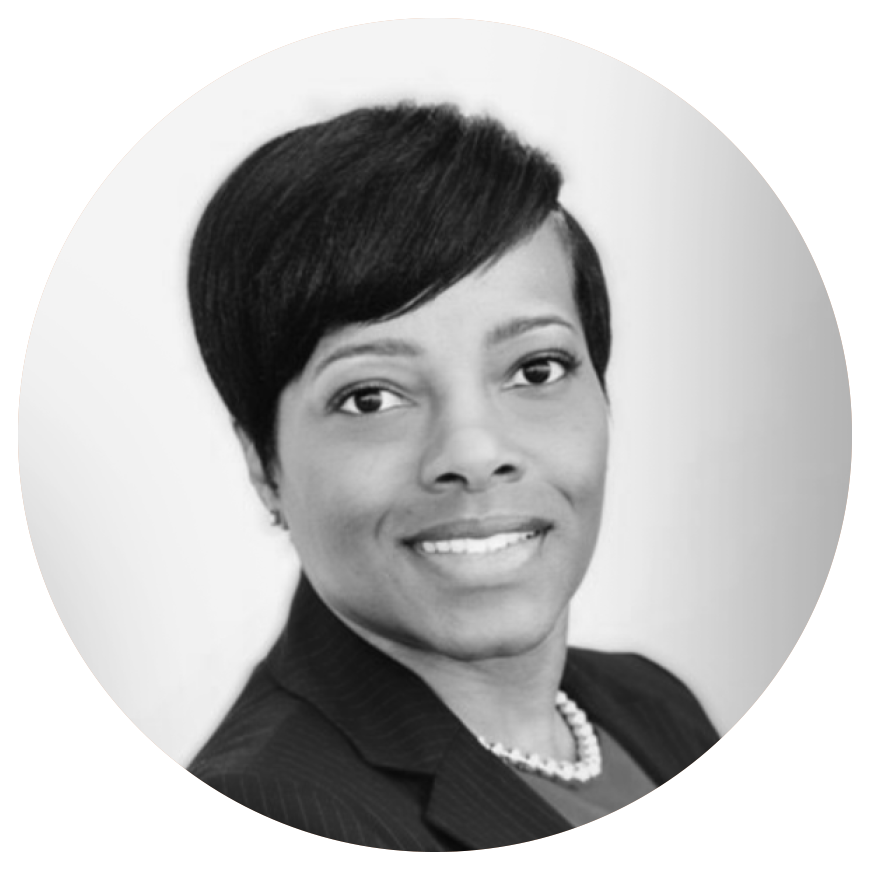
COMPANY:
Assurant, Inc.
ROLE:
Vice President, Diversity, Equity & Inclusion
BACKGROUND / EXPERIENCE:
An operational leader with over 20 years’ experience leading diverse teams and executing DEI strategies to increase engagement, belonging, and representation, Alecia has a passion for people development, mentorship, and using her voice to advocate for those who may not have a seat at the table.
COMPANY’S DEI FOCUS FOCUS FOR 2022:
Build and empower diverse winning teams.
INSPIRATIONAL DEI LEADER:
Vernā Myers of Netflix. She taught us the meaning of diversity and inclusion: “Diversity is being asked to the party, inclusion is being asked to dance.”
Note: Vernā is passionate about DEI, is a frequently sought-after speaker on the subject and has a notable course on LinkedIn Learning on biases, Confronting Bias.
Soon Mee Kim
SHE/HER/HERS
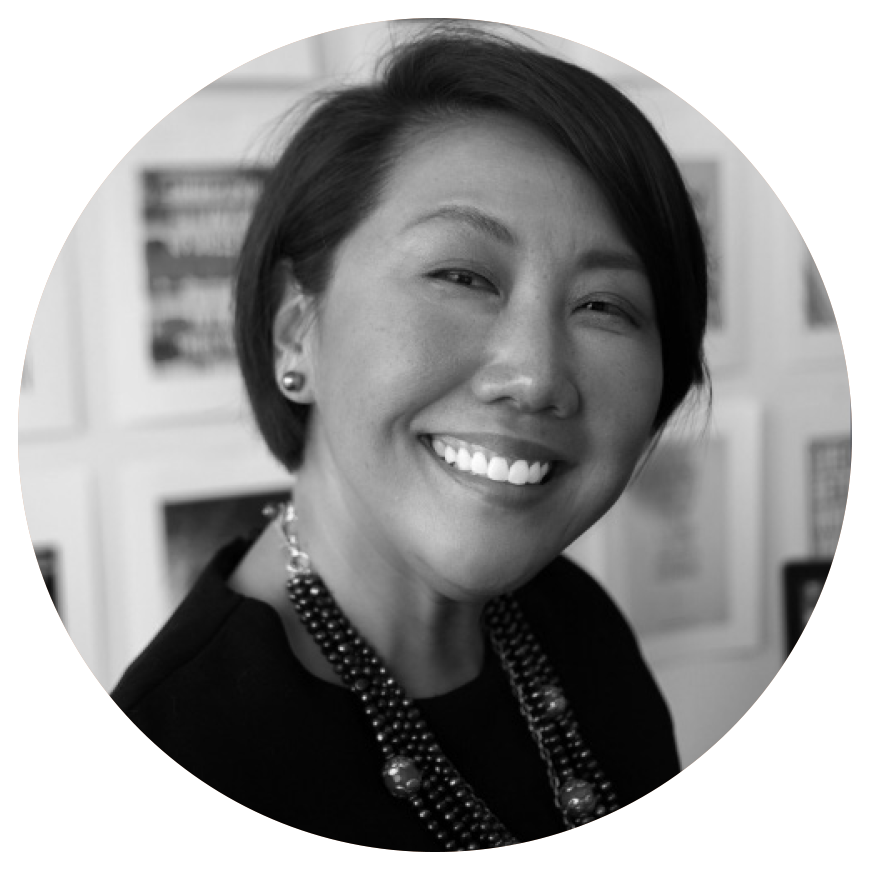
COMPANY:
Omnicom Communications Consultancy Network
ROLE:
Chief Diversity, Equity & Inclusion Officer
BACKGROUND / EXPERIENCE:
Her global DEI leadership has focused on the hard work of reaching hearts and minds, especially within creative and professional services industries.
COMPANY’S DEI FOCUS FOCUS FOR 2022:
Driving systemic change, upskilling our people through a robust DEI learning journey, and integrating DEI into everything we do.
BOOK MOVIE, OR SHOW THAT YOU WOULD RECOMMEND:
“The 1619 Project” by Nikole Hannah-Jones
“Minor Feelings: An Asian American Reckoning” by Cathy Park Hong
“This Land” (podcast)
Stef Alicia McCalmon
SHE/HER/HERS
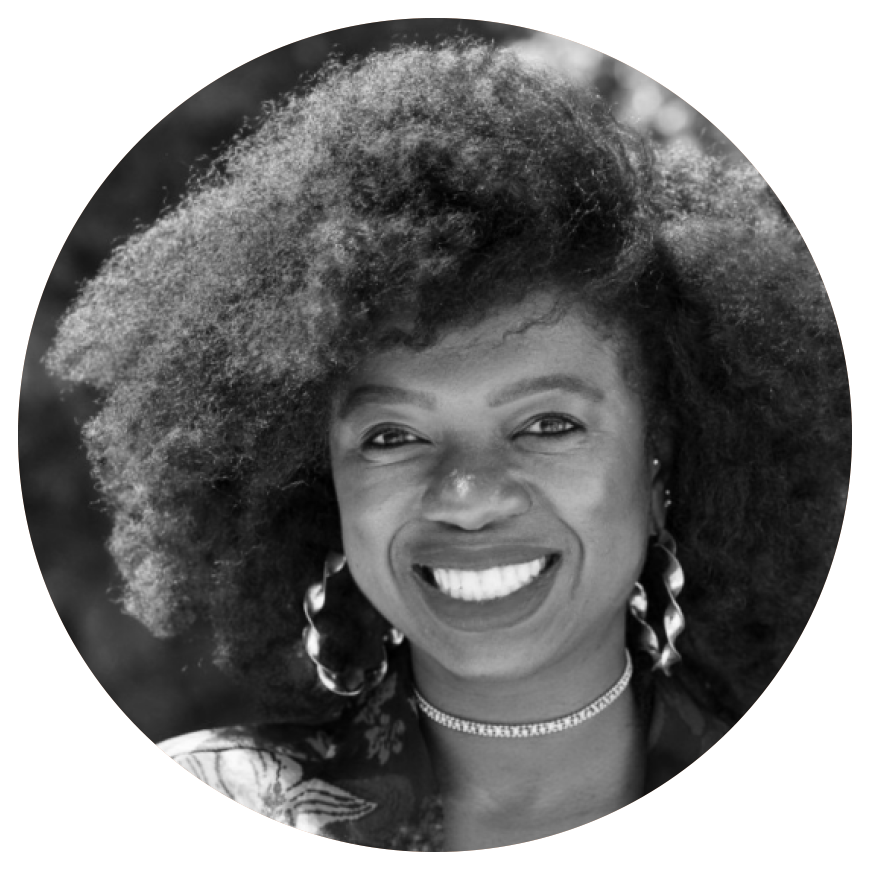
COMPANY:
Stef Alicia Made
ROLE:
Founder & Chief Executive Officer
BACKGROUND / EXPERIENCE:
Stef Alicia founded Stef Alicia Made to address the systemic issues that impede social change, using innovative design thinking, storytelling, and accountability frameworks. She has worked with organizations and leaders across industries to build more equitable and inclusive tools to honor the diversity of the company, customers, and communities they serve.
COMPANY’S DEI FOCUS FOCUS FOR 2022:
Advancing and measuring belonging within our culture.
BOOK MOVIE, OR SHOW THAT YOU WOULD RECOMMEND:
“The Real World: Homecoming” This series reunites roommates from the groundbreaking Real World series decades later to address events and unresolved conflicts that took place during their time together. Producers prompt the castmates to speak to these issues, many intersecting race, LGBTQ+, religion, and politics, through montages of archival footage. It allows individuals to contextualize the difficult moments they faced and creates opportunities to heal wounds, seek closure, and model the possibilities that come forth from having difficult conversations.
After the heightened conversations around DEI in 2020 and 2021, when hundreds of companies came forward to make donations to Historically black colleges and universities and made statements regarding DEI, how much has really changed in corporate America in terms of policy, approach, or the demographics of employees?
STEF ALICIA MCCALMON: There has been a push for companies to be more flexible, to be more responsive, and to think about why they’re having such issues retaining Black talent and people of color. What I think is interesting about the Great Resignation, for example, is that any issue has an intersectional overlay. The reckoning of 2020 is not separate from the Great Resignation. It’s not separate from the mental health crisis. I think companies are still looking at things in separate buckets, as opposed to seeing the overall DEI strategy that should be woven through the entire organization.
ALECIA BAILEY: While I can’t speak for all organizations, I do believe a great many have made significant efforts since the racial awakening in 2020, but there’s still work to do. For example, when it comes to the DEI field, we see many people who look like me. They’re Black women, or people of color in general, traditionally leading in the DEI space. And that makes sense because our lived experience is directly relevant to the job. But it’s not representative when we look at the C-suite in some larger organizations. That’s a key indication there’s still work to be done.
SHERIKA EKPO: Companies are really prioritizing inclusion and belonging. However, some are doing it as a performative activity while others are really thinking more strategically about it. LinkedIn reported in 2021 that the hiring of C-level diversity-focused roles grew by 111 percent as a share of all C-level hires that year. I think that is interesting, because sometimes when you get below the surface and you talk to these people, you say, “So, how many people are on your team?” “None.” “What’s your budget?” “$10,000.” So, while there seems to be a focus and an opportunity, what I’m finding is that below the surface, everyone isn’t afforded the chance to have the financial and human resources to support the work that needs to be done.
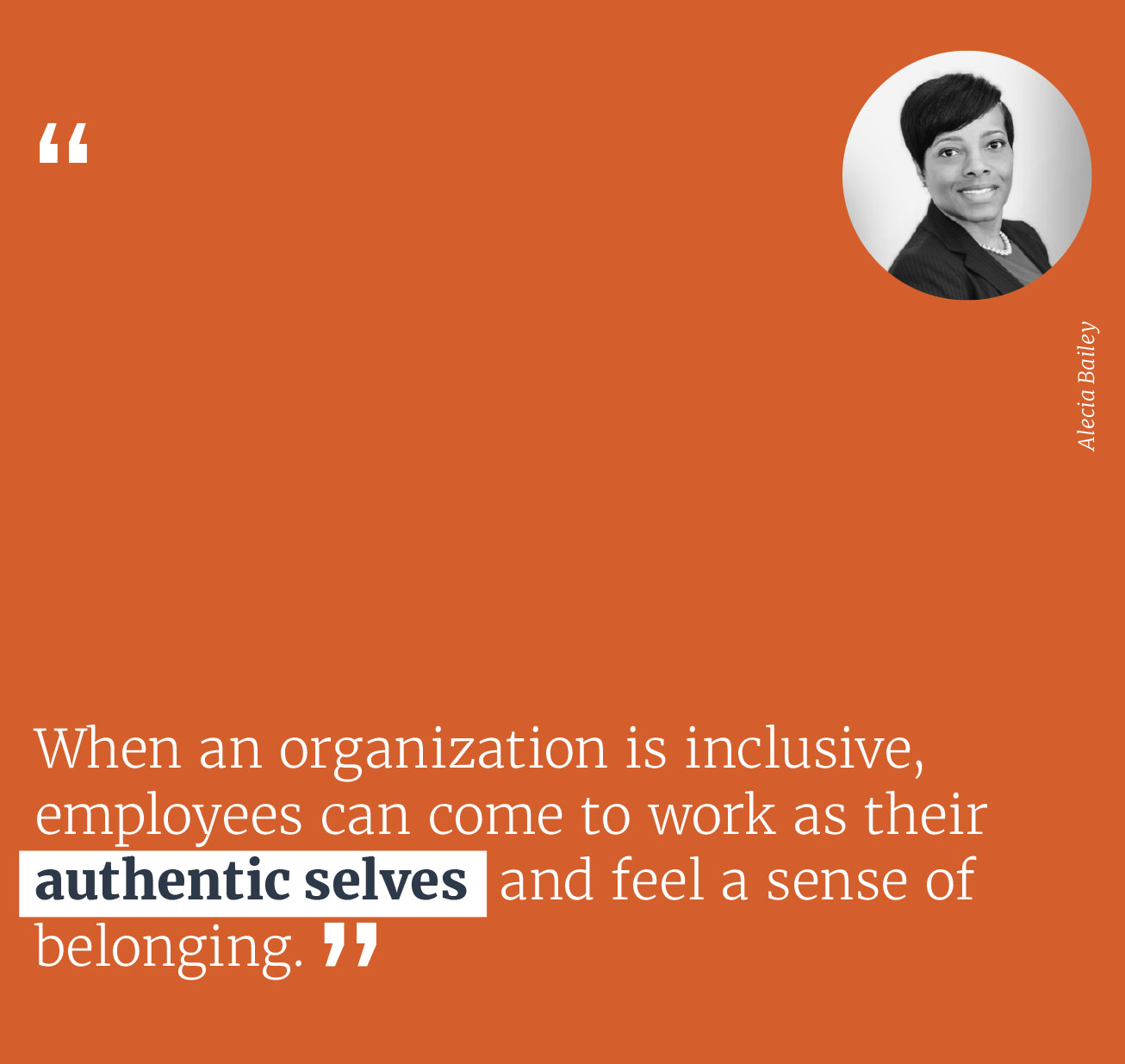
What are you noticing in DEI today? What shifts have you observed?
ALECIA BAILEY: I see a shift in recognizing that diversity is not a simple check-the-box exercise and goes beyond what is visible. Diversity shows itself in so many ways: for example, being more inclusive of neurodiversity or recognizing that a disability is not always visible. DEI impacts a company’s culture, and organizations are redefining their culture to embed DEI into their philosophy through accountability. When an organization is inclusive, employees can come to work as their authentic selves and feel a sense of belonging.
SHERIKA EKPO: There’s a renewed focus on the development of talent and those specific employees at the intersections — Black women, Asian women, LGBTQ+ employees, and more. It’s a very, very fine line, because then you get other employees saying or asking, “Well, what about me?” And you have to explain the business case for equity, because a lot of why these individual programs are developed is to create equitable outcomes, because the systems that we have are just not set up that way.
INGRID EMMONS: A shift I’m seeing is that DEI roles are sometimes being downgraded. Initially, they were C-suite roles or SVP-level roles, and now you’re seeing people take over those roles and inherit those portfolios at a more junior level. Here at Aveanna, the role has remained very visible and continues to have traction — something I am very proud of.
What advice would you offer on how to push for change in this climate?
SOON MEE KIM: Regardless of the political or social climate, it’s critically important to have a sincere commitment to the work of diversity, equity, and inclusion and to know why you’re pushing for change. On my computer monitor, I have Post-it notes with the names of specific people and children written on them, to serve as a visual personal reminder of the work of systemic equity. One of the key tenets I follow is “Progress over perfection.” Unfortunately, I see too many organizations seek perfection over progress, which means they’re slow to act and performative, and soon they’ll get frustrated and quit. Committing to equity means committing to the long game. We have to put in the work and build our resiliency for the long haul.
STEF ALICIA MCCCALMON: I continue to see a lot of focus on the side of the Employee Resource Groups (ERGs), and while affinity spaces are important for community building, I also caution leadership to not put the responsibility of organizational change on the shoulders of these groups. They already shoulder a lot within the workforce, showing up with these varying identities and having to navigate spaces that are not hospitable in some cases. When thinking about the formation, management, and optimization of ERGs, that is essentially a job. Justly so, some companies are starting to give stipends to their ERG leaders, but certainly not enough. In addition to forming ERGs and compensating leaders of these groups, organizational leaders should commit to a large-scale business review that addresses inequity across all functions, and not just in the people operations.
INGRID EMMONS: The ultimate goal is establishing a sense of belonging. However, I think to have expectations that organizations and demographics at a senior level are going to change overnight is very unrealistic. It’s more about steady and sustainable change. Cultivating connections is the most important element, and the catalyst is to introduce new ways of thinking resulting in a shift in perspective. It is really all about creating communities that allow connections to take place.
SHERIKA EKPO: To be successful and have an organizational commitment to change, you must follow the money. The budget always dictates the priorities. When I listen and talk to people, I ask, “Show me the financial resources associated with your work.” Sometimes leaders need help understanding how they’ve allocated their budget. For example, the Chief Diversity Officer may not have the internship budget aligned with them because it’s under talent acquisition. Internships can be part of the inclusion initiatives, as they’re thinking about emerging talent and being more diverse. Sometimes it’s a conversation and a perspective shift for where financial resources lie.
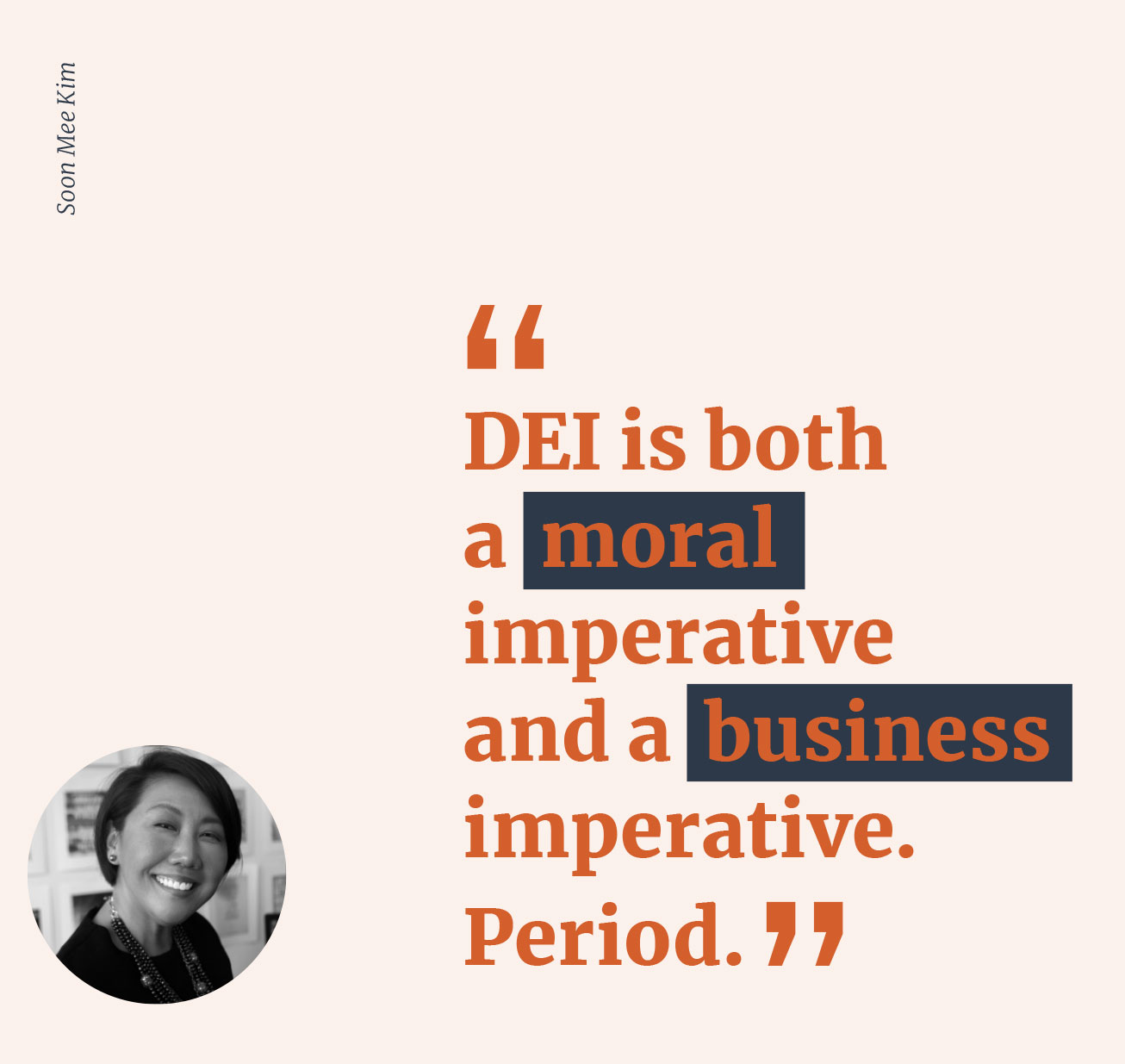
How do you convince the C-suite that prioritizing DEI is still necessary to move the organization forward?
SOON MEE KIM: If you have to convince your C-suite today that DEI is necessary to move forward, I’d be very concerned about the organization and the C-suite’s fitness to lead. DEI is both a moral imperative and a business imperative. Period. The studies are clear: Organizations that are more diverse, equitable, and inclusive perform better on every measure — and not just by a small margin: the performance gains are quite significant. DEI leaders must continue to partner with and communicate with C-suite leaders to make a lasting impact.
STEF ALICIA MCCCALMON: Right now, the DEI mindset is largely around the business case for DEI, and strictly staying in the business case, you’re going to see it as “This person is worth X number of dollars to our business, and that is why they are valuable to us,” as opposed to the human case, which I personally prefer. If you look at the human case, it creates more space and opportunity for you to value them as a person in your organization and in your community. Ultimately, when that person is doing well and is thriving as part of a robust and inclusive community, business success will be a byproduct. That’s a mindset shift I haven’t fully seen yet, but the discourse is out there.
ALECIA BAILEY: If your leadership is not convinced that DEI is essential simply because it’s the right thing to do, there is plenty of data that demonstrates the business impact of diverse teams — from innovation to financial performance.
At Assurant, our leaders have committed to increasing our bench strength regarding people of color and women. The work has to come from the top for there to be real change. One of the first things our CEO did during his inaugural year was to bring in additional underrepresented minorities to our Management Committee. So, I can speak firsthand that some change is happening at the executive level. Does it mean we can declare victory? Absolutely not. There’s still work to be done. Action must occur at all levels in order for continuous change and progress long-term. Making these changes takes time, and we are committed to doing that additional work.
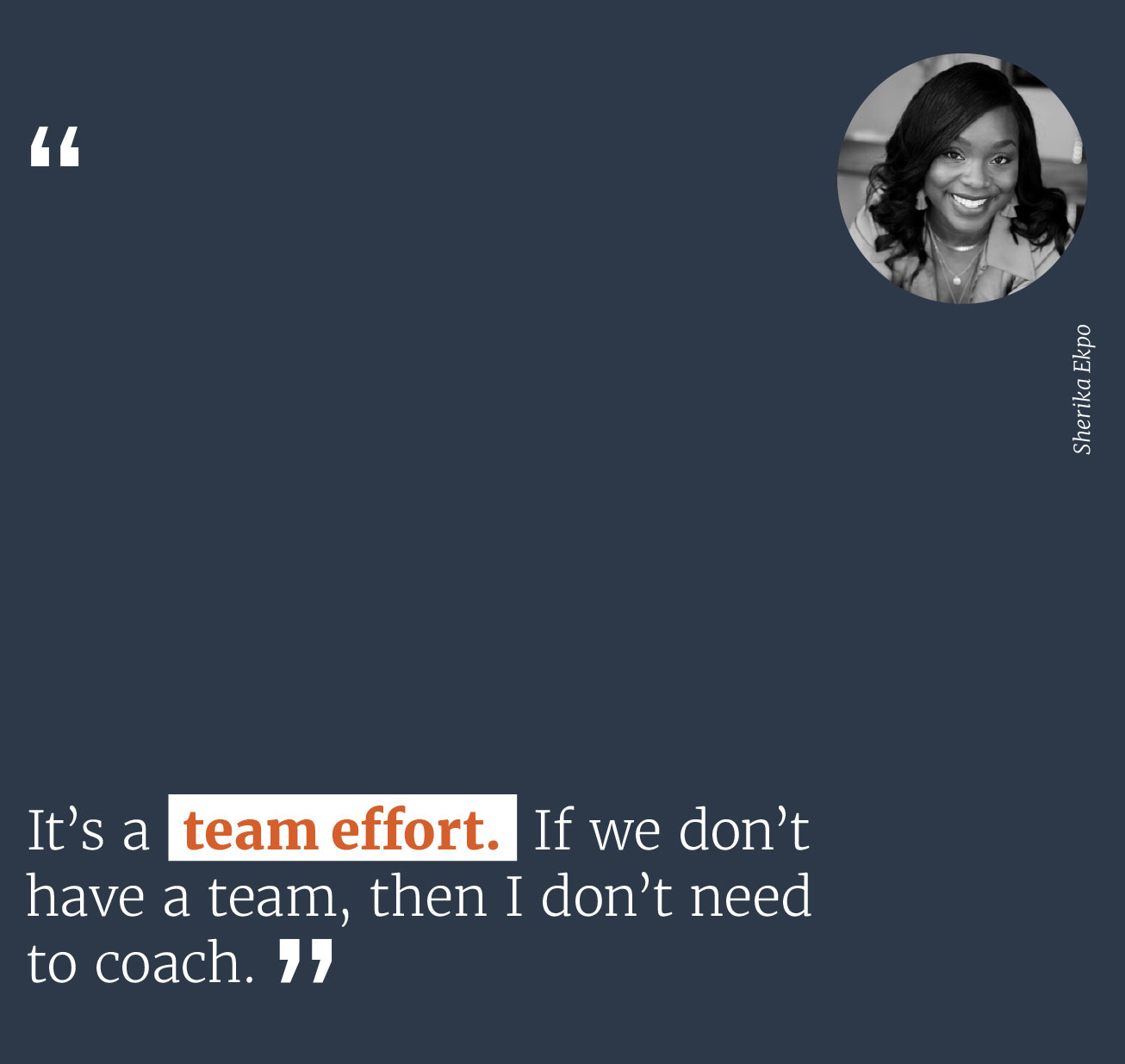
How do you maintain clarity of ownership and accountability for DEI across the organization?
INGRID EMMONS: Build out the infrastructure. We have our DEI Executive Committee with C-suite representation and DEI Working Committee, which includes employees from both corporate and field leadership. This important group represents high-potential high performers with deep institutional knowledge. Then supporting them, our eyes and ears on the ground, are our Employee Resource Groups. The ERG leaders do a phenomenal job partnering with our Working Committee to drive sustainable change.
SHERIKA EKPO: “I’m not doing all the work.” And I say it just like that. This is not just a me job. And that’s the problem with having all these Chief Diversity Officer roles spring up now. Organizations believe that person is the sole person responsible for the success of inclusion at their firm. And they’re not, they’re just the leader. I tell people all the time, “I’ll be the coach, I’m good with that, but who is on the team?” It’s a team effort. If we don’t have a team, then I don’t need to coach. In my org, I’m a part of the team, and I have real projects. I have to roll my sleeves up, figure out the project plan, remove the barriers, ask the CEO for what I need, and align with my peers.
How do you establish visibility and business ownership of DEI beyond HR?
STEF ALICIA MCCCALMON: I would challenge leaders to look department by department, function by function, [at] “How are we operating in a way that doesn’t reflect the diverse nature of the country that we live in?” If you start there and make it part of every department and every function’s mission to reflect the country you’re operating in — depending on your goods or your services, who your target customers are, etc. — even that will begin to lead to a shift. Ultimately, the work of DEI is not going to be effective being siloed to one office like HR. You need to distribute that work across the organization to create ownership of not only the problem but also the solution.
ALECIA BAILEY: At Assurant, we formed an Executive Inclusion Council (EIC) comprising our senior leadership with our CEO as chair. At the beginning of the year, we created our DEI roadmap based on our initial DEI strategy, and we shared it with the EIC, which includes all of our Management Committee and division heads. We identified our accomplishments and programming for the year, then highlighted initiatives like our mentorship program, the launch of our ERGs, and the multiyear roadmap. We’ve discussed with the EIC our overarching targets for programming and accelerating women, people of color, and underrepresented minorities in leadership as an organization. That same message is cascaded from our Management Committee down, and our DEI team helps to reinforce it through roadshows.
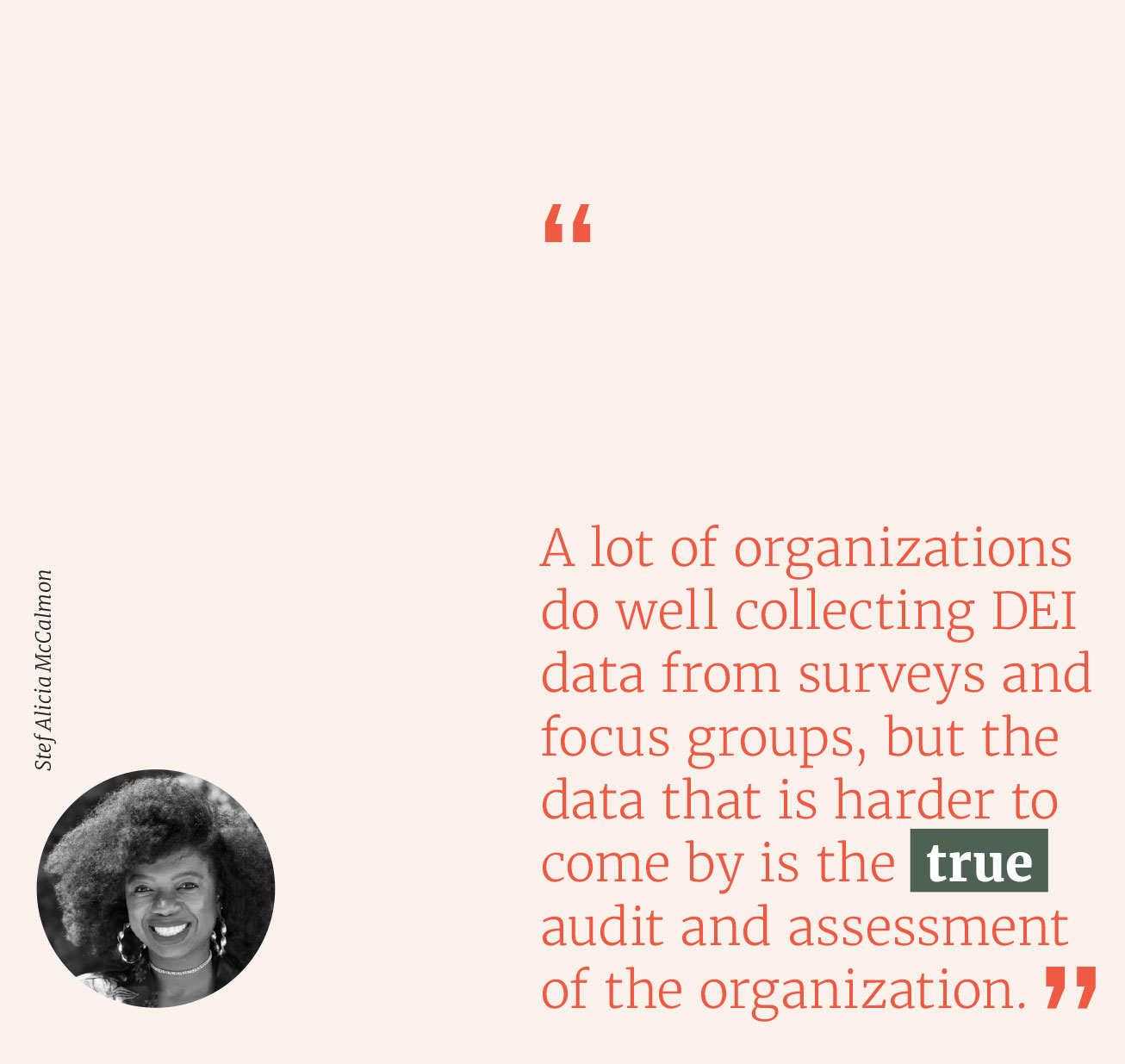
What DEI data points should companies be looking at that are tied to both DEI and business goals?
STEF ALICIA MCCCALMON: A lot of organizations do well collecting DEI data from surveys and focus groups, but the data that is harder to come by is the true audit and assessment of the organization: for example, what’s been done to date in terms of pay equity, hiring, and career advancement. I would love to see more transparency around how an organization has operated to date and a willingness to come to terms with that and say, “We know that the way we’ve operated has not been equitable, and we’ve profited from that. Now we are doing well financially, but we’re not doing well on a personal, human level. Let’s turn our focus inward and start addressing some of that and bring those numbers out.”
SOON MEE KIM: There are a number of KPIs for DEI I look at that are both quantitative and qualitative. In addition to workforce representation data, I recommend assessing new-hire rates, promotion rates, and retention data, as well as pay equity analysis for race and gender. It’s also important to disaggregate the data to understand how different groups are impacted. Additionally, opt-in identity surveys and cultural climate assessments provide needed information, as well as pulse surveys and post-program feedback. Make sure that you’re able to tell a story through the data, however. Data without context can be dangerous.
SHERIKA EKPO: Diversity equals data to me. It’s the workforce representation numbers, identifying the gaps, and measuring the progress so we can hold ourselves accountable. My number one goal is to create data transparency, and we are still working on that. We talk about our business, our pipeline, and our clients in depth. However, we didn’t have the same level of scrutiny on our internal employee experience, and that’s what I wanted to drive to my peers.
We created a dashboard in Anaplan that we leverage consistently to see where every business is, the intersectional points of employees, and other data as well. We can say, for example, we’re losing Latinx women faster than we’re losing Black men, so we really need to think about how we engage the ERG if we’re losing Latinx women this way. Which types of strategic organizations should we partner with to build our brand and reputation as an employer of choice? Having that intersectional data married with the data that we’ve always had in our workforce planning models have really accelerated the progress that we have in terms of the initiatives and goals we want to achieve.
How do you celebrate the small wins on your DEI journey?
STEF ALICIA MCCCALMON: With the need to have so many teams involved as part of this DEI work and the roadmap journey, you absolutely need to celebrate those small wins along the way. It brings the whole organization into the process of becoming a more equitable place, and it can also create a culture that understands that driving behavioral shifts in how we operate is going to be ongoing work, not a one-off effort. Anything that you bring to move the needle forward on building a more inclusive workplace is worthwhile, big or small, and we celebrate that. It also shows recognition and that your contribution to this work is valued.
ALECIA BAILEY: DEI work is challenging but very rewarding, so those wins are something to celebrate. In general, we link inclusion to creating the feeling of belonging. We have meetings where we talk about our accomplishments and celebrate them, always grounded by the fact that we have much more to do. We bring that to our all-hands employee meetings as well. It’s not just the DE&I team celebrating or accomplishing.
It’s looking at our roadmap and seeing the accomplishments as an organization. We also share our accomplishments and DE&I journey with the broader DE&I community, other organizations, and our network on social media. We observed World Day for Cultural Diversity for an entire week this year, as we are a large, global organization, and there aren’t enough days in the year to be able to celebrate all our cultures and all our differences. We’ve provided a week where employees could use their own voices to share their cultures. It’s powerful to hear their stories and feel how much they love and celebrate their culture. That’s one example of how we celebrate who we are — by making diversity seen, heard, and celebrated.
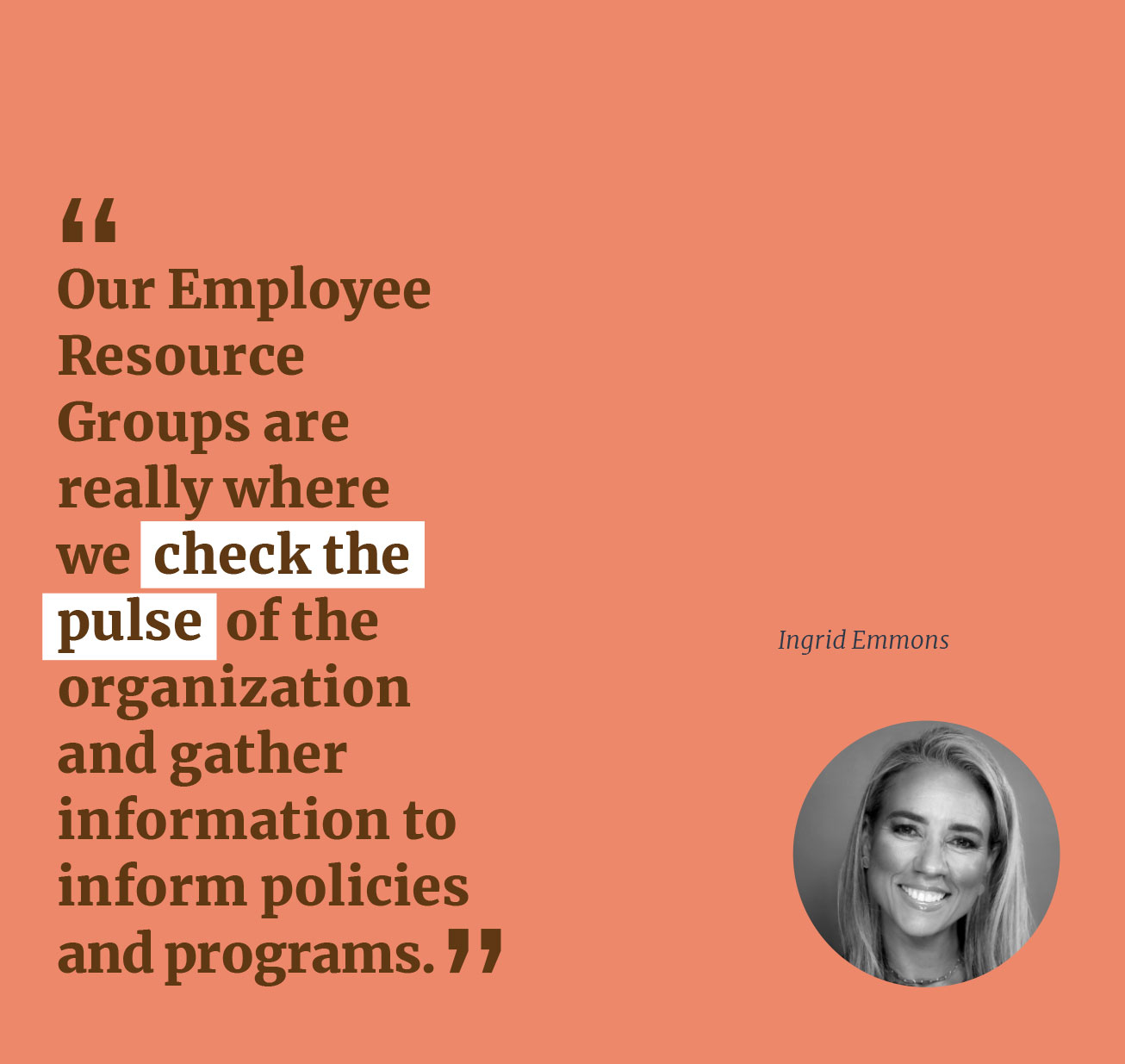
How does your organization maintain two-way dialogue and engagement when it comes to DEI?
SOON MEE KIM: First and foremost, it’s so important that leaders at all levels create psychological safety, demonstrate empathy, and be human on all matters, not just DEI. These values-based actions lay the groundwork for colleagues to engage in DEI and develop trust. Formal groups such as ERGs, affinity groups, and DEI councils, as well as informal work relationships, can be powerful conduits for communication.
STEF ALICIA MCCCALMON: Beginning with ERGs is a great place to start, because it creates the environment in which you can cultivate safety, and with safety comes innovation and great ideas. When people feel safe and comfortable enough to share, I encourage leaders to take that information in as another source of data. When you listen to the issues that people are bringing up repeatedly, catalog them, and analyze them, you can start to create plans and actions. All of that can start with your ERGs if the feedback channels are open.
INGRID EMMONS: We have several two-way feedback channels, but our Employee Resource Groups are really where we check the pulse of the organization and gather information to inform policies and programs. Our ERG members are surveyed after every meeting to ensure alignment with expectations, and the ERG leaders meet with the DEI Working Committee once a month to share that feedback.
How does your organization engage employees in DEI initiatives?
SHERIKA EKPO: As an organization, Anaplan hosts enterprise-wide cultural celebrations, in conjunction with our Employee Resource Groups, to create connection and foster belonging. Earlier this year, Asiaplan, an Anaplan Employee Resource Group, hosted a special event as part of our APIDA Heritage Month activities. Anaplan’s Victor Barnes, Chief of Connected Planning, hosted a fireside chat with Ms. Sara Park, Vice President, E2E Integrated Planning at Coca-Cola, where they discussed how to “Advance Leaders Through Collaboration.” That was followed by a brief Q&A. These types of events provide Anaplan with an opportunity to celebrate different cultures and identities, but also confront stereotypes and biases that are present in the business world.
INGRID EMMONS: We try to share different experiences or thought processes in an experiential cultural communication every month where we cascade information about a DEI-themed topic. In addition, whether it is our intentional inclusion training, inclusion inspired series, or Employee Resource Groups, the format through which we share and gather information continues to be dynamic. At Aveanna, you really get to know our leaders; they are very approachable, and we take great pride in this, because humanizing an organization is key to cultivating connections.
SOON MEE KIM: Inclusion includes everyone. While we’ve already discussed data, we can’t overlook the impact of personal narratives to create connections. In our work, we ask colleagues to do the “heart work.” That often leads to an openness to others and even a personal reckoning. That authenticity begins to show up in other ways we work on teams or client work. And once we experience that kind of realness, anything else becomes completely unsatisfying.
